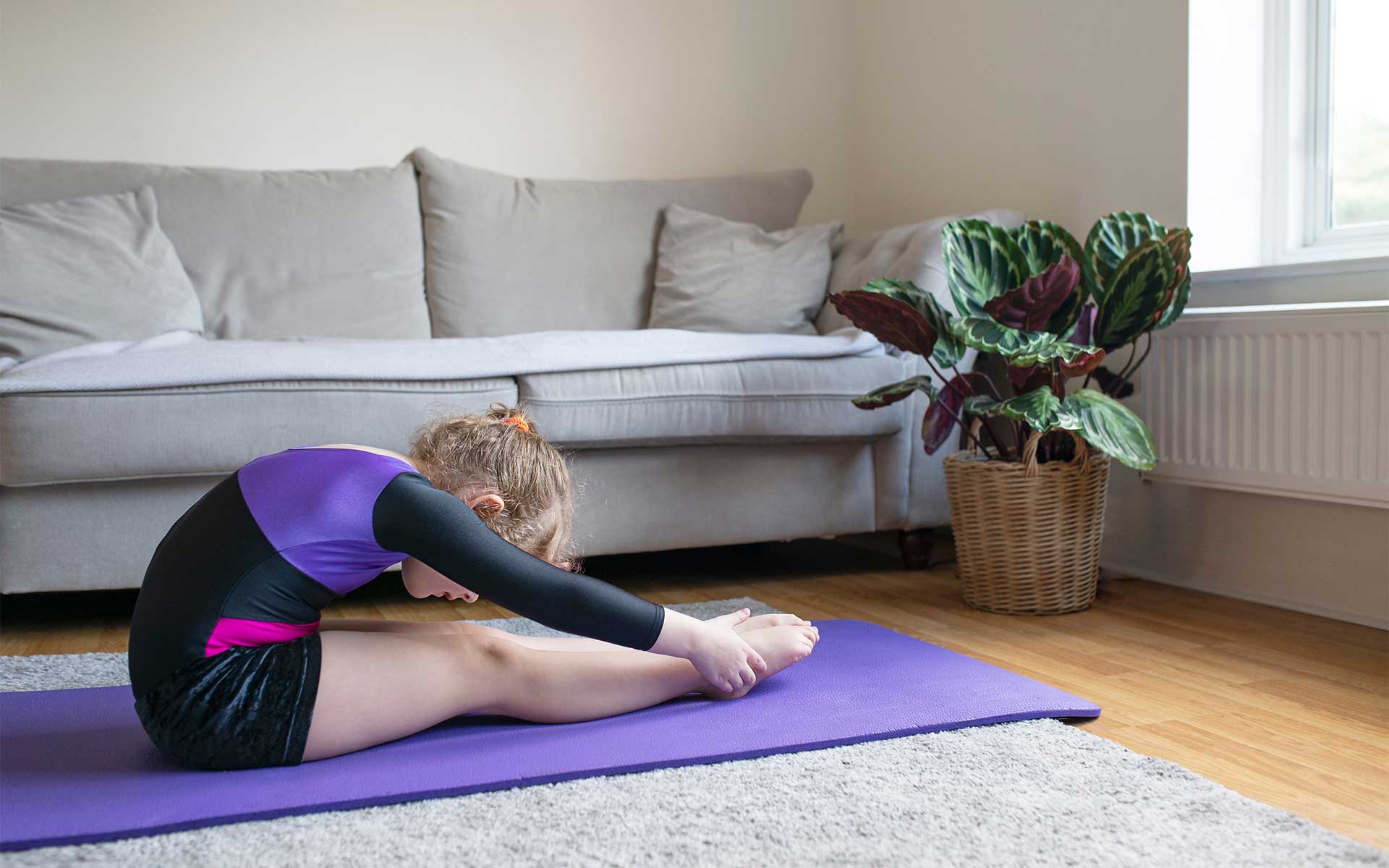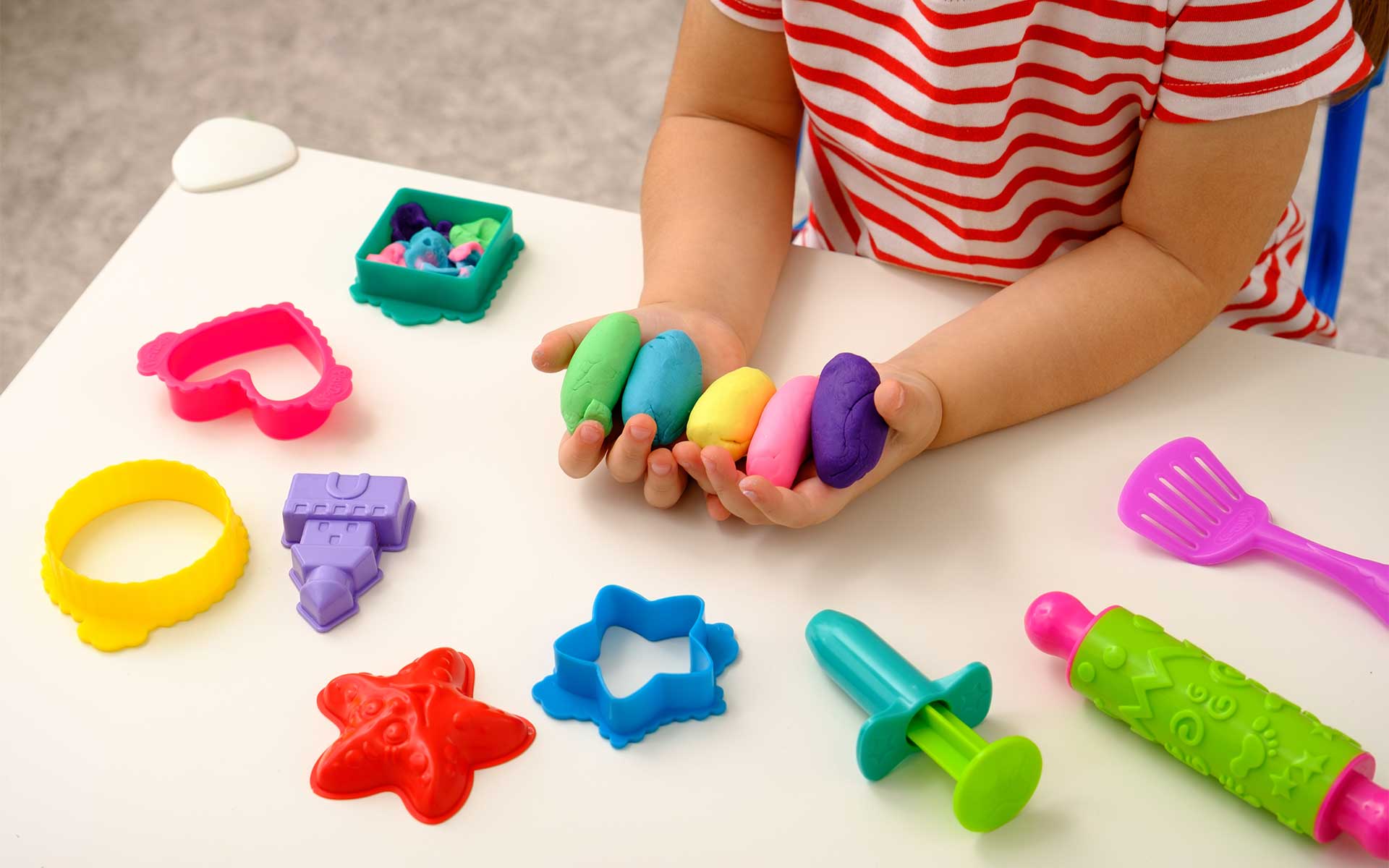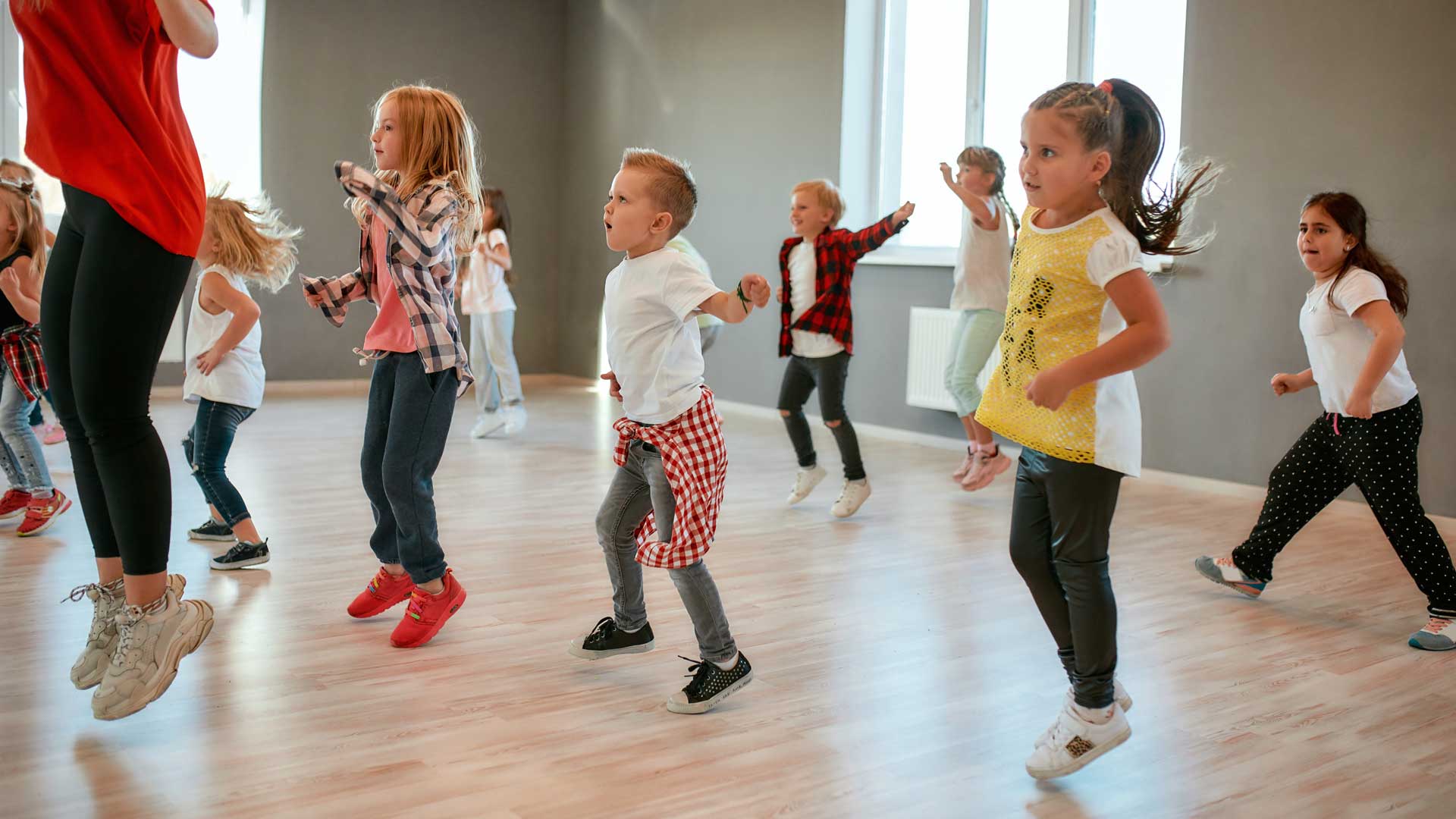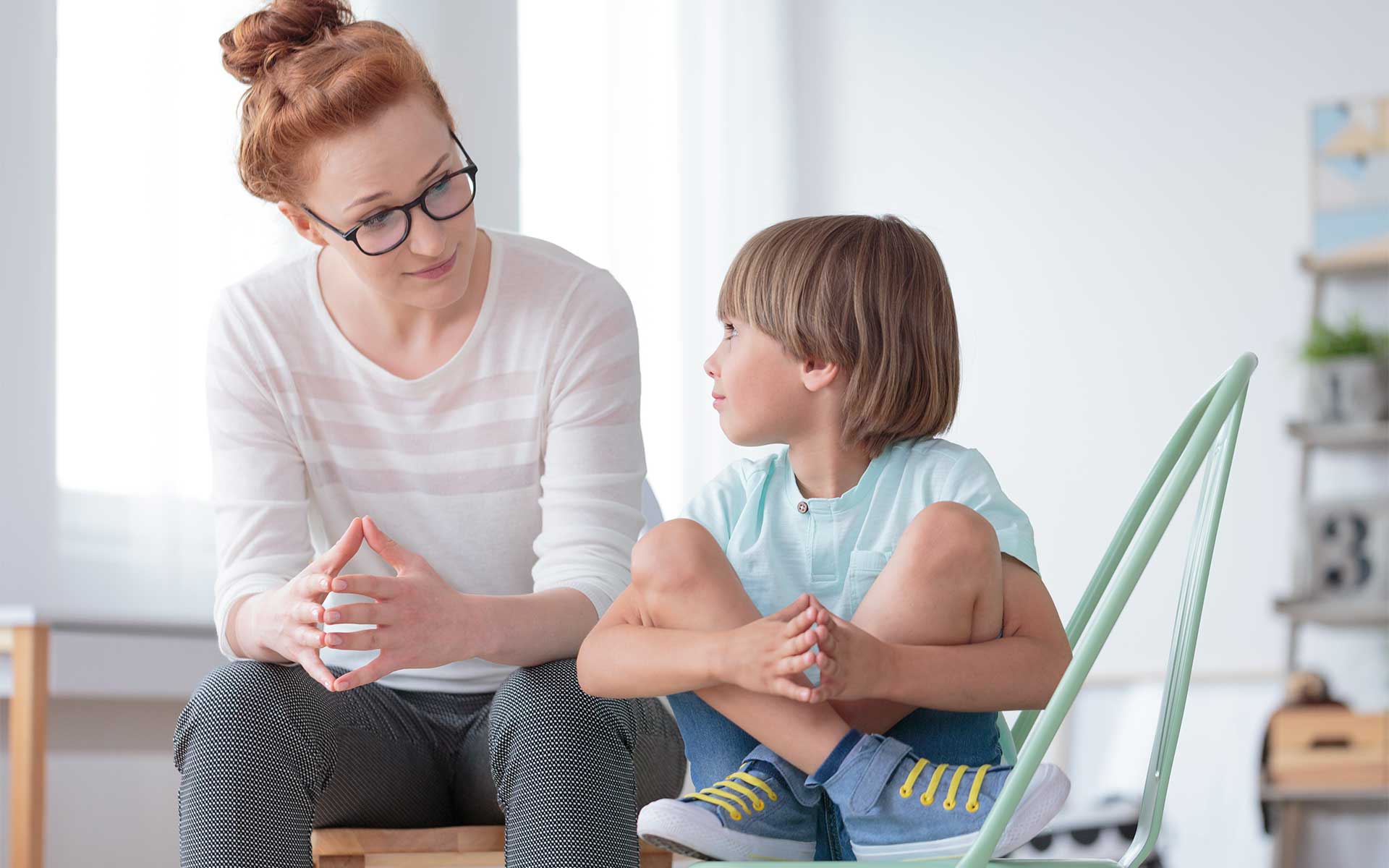
As adults, we do not always remember what it was like to be a kid. The feelings and emotions, especially in toddlers and preschool-aged children, are new and sometimes overwhelming. However, young minds aren’t equipped to think rationally about their behavior, so parents and caregivers often need alternate solutions to help manage emotional meltdowns.
Today, we’re covering calm down strategies for kids that can help when feelings become overwhelming. Life is filled with big physical and emotional experiences, and our ability to control what’s happening around us is innately tied to how we react. Therefore, these calming techniques for kids serve two purposes: redirecting children’s stressful emotions with focused activities that engage the mind and body while helping them learn how to handle emotions in a healthy way.
The Science Behind Calming Exercises for Kids
Emotional regulation, i.e., the ability to identify, process, and express one’s emotions healthily and appropriately, is an imperative skill for young children to develop. The prefrontal cortex is the part of the brain that controls regulatory behaviors like impulse control, reactivity, and flexibility. It develops primarily during adolescence and fully matures around 25 years old.
We can help shape this development from an early age by teaching children to calm themselves with mindfulness through engaging activities. These calming techniques for kids encourage being present and focusing on what’s happening in their bodies and surroundings in that moment of distress, anxiety, or frustration.
Implementing calm down activities for kids early on is crucial for helping them learn how to manage stressful emotions. These calming activities engage and focus the mind, body, or senses while assisting children to relax and redirect energy into positive expressions. They also help equip children with essential tools for emotional regulation by nurturing the resilience and emotional intelligence needed to navigate future challenges in healthy ways.
By integrating calming techniques for kids into daily routines, we can support their mental well-being, promote healthier coping strategies, and lay a strong foundation for their future emotional and psychological development.
The Best Calm Down Strategies for Kids
These calming down strategies for kids are easy to implement almost anywhere with the right tools and environment. We’re dividing them into three groups: quiet, interactive, and active. Each of these calming fun activities for kids engages their minds or energy away from stressful emotions and situations, allowing them to focus on a single process or activity, redirecting emotions and reducing stress.
Relaxation Techniques for Kids

Breathing Exercises
Simple yet effective, breathing calming strategies for kids often do the trick. Begin by having them lay flat on their back and place a stuffed animal on their belly. Tell them to think about their belly like a balloon and breathe deeply to fill it. Next, have them breathe out to deflate it. Repeat this simple process five times, allowing the stuffed animal to take a fun ride on their moving belly.
Quiet Corner Time
Sometimes, kids just need a quiet space to regroup, making creating quiet spaces one of the more effective strategies to calm down for kids. This isn’t a punishment or a “time out”. Instead, creating a peaceful, dedicated space (like a corner) for kids to relax can be calming. Let them personalize the space by hanging posters or their drawings and including favorite blankets, stuffed animals, picture books, and pillows to make it cozy and inviting.
Counting Heartbeats
The simple activity of focusing on heartbeats can both redirect and calm. Begin by showing them where they can feel their heartbeat, like on the wrist or the neck. Next, have them close their eyes and count the beats out loud. You can offer a specified number to reach, like 10 or 15, or simply let them focus as long as needed.
Stretching
Stretching is a mindful movement that doubles as a calming technique. To simplify it, have a few easy stretches in mind, like touching toes, reaching for the stars, and overhead arm pulling. Instruct children to focus on breathing in and out slowly during stretches, perhaps closing their eyes to focus on the “feel” of their stretching muscles.
Naming Senses
This calming technique for kids can go a number of different ways. The goal is to have the child focus on their environment and surroundings and talk about it through one of their five senses. These can be one to five things they can see, hear, smell, feel, or taste. The goal is to have them redirect their focus to one of their senses and talk about the experience. For example, you can go outside and ask your child to name three things they can hear and then two things they can see.
Stringing Beads
When it comes to using repetitive movements in calming activities for kids, stringing beads or Cheerios onto a piece of yarn is easy and fun. The process can also trigger their creativity, turning a calming activity into a work of art!
Storytime
Calming activities for kids before bed are great for helping busy minds and bodies wind down from the day. Storytime is perfect at bedtime or any other time of the day, requiring kids to sit, listen, and absorb the words they are hearing or reading.
Interactive Calming Techniques for Kids

Picture Making/Coloring
Creating art, drawing, or painting offers many benefits in childhood development, including focusing their attention away from stress. When tensions run high, break out the colored pencils, markers, or paints and request a work of art. This calming technique for kids also offers an excellent opportunity to praise their success in turning the situation around by hanging the art up afterward.
Puzzles
Puzzles are a calming activity for kids that engages the mind and hands while offering a problem-solving challenge. There are puzzles designed for children of all ages and stages in life, so be sure to select an age-appropriate version to avoid unnecessary stress or frustration.
Legos
Like puzzles, legos challenge the mind and hands, redirecting young minds from stressful emotions as they build and create. Building with Legos is an excellent, engaging, and calming activity for kids four and up.
Play-Doh
Incorporating Play-Doh into strategies for calming kids down is nothing new! This fun modeling clay, invented in the 50s, keeps little hands and minds busy as they shape, mold, and manipulate imagination into reality.
Slime Time
Using slime as a calming activity for kids can involve making the slime, which engages them in the process and promises fun results. Just beware of slime on carpets!
Baking
Sometimes, the best calm strategies for kids involve helping out, and baking is a fun process that engages the mind and small hands with intentional measuring, mixing, and molding. Helping with baking can be calming and educational, and the results are a delicious treat.
Organizing
When considering calm activities for kids, organizing may not immediately come to mind. However, the systematic act of rearranging and moving items can have a very calming effect.
Origami
Origami is the traditional Japanese art of paper folding. It’s a creative yet methodical calming technique for kids that engages minds and hands. There are many books and online tutorials available about creating origami.
Blowing Out a Candle
Blowing out candles requires focus and breathing, which can be calming. Begin by lighting a candle for the child to blow out. Once they have, take a step back and relight it, encouraging them to take a deeper breath to blow the candle out. Continue the process, making a game out of it, and watch the calming effect of those concentrated deep breaths.
Paper Tearing
The simple act of tearing a piece of paper or cardboard can be a calming technique for kids, especially when angry or frustrated. All you need are safe, easy-to-tear items (check your recycle bin!) and space for a little demo.
Active/Play Calming Strategies for Kids

Nature Walk
A simple walk outside can be very grounding when done slowly and mindfully. Ask your child to pay attention to how the ground feels as they walk softly in their shoes. They can also focus on which part of the foot comes into contact with the ground. The goal is to slow down and pay attention to their surroundings while walking, which can reduce anxiety.
Swinging
Some calm down strategies for kids are already activities they love, like swinging! Done in a swing or from bars, swinging can spark joy and get the blood flowing, helping ease tension in young minds.
Building
Building takes energy and focus, providing a great outlet or distraction from negative feelings. From building a pillow fort to a bird’s nest with twigs and leaves, creative building is a great way to relieve tension.
Dancing
Dancing like no one is watching adds a beneficial physical component to calming strategies for kids. Turn up the music and move! You can join in and demonstrate moves or just clap along for encouragement.
Singing
There are many benefits to calming activities for kids, especially singing. Kids love to sing! It teaches them how to use their voice to express themselves and be heard – all qualities that boost confidence. Singing is fun and helps ease tension, so encouraging children to sing aloud when frustrated or angry can lighten the mood immediately.
Animal Walking
Playful calming down strategies for kids are fun and mood-lifting. Animal walking, or imitating how an animal moves, requires kids to think about their body and focus on mimicking an animal’s movement. Give them a handful of animals to imitate (sounds are encouraged, too), and watch as their mood transforms along with their body movements.
Sand Play
As one of the more popular calming techniques for kids with autism or anxiety, sand play is a sensory activity that is soothing and engaging. This activity can happen inside with a sand tray or outside in a sandbox. Add some small cups, Tupperware with lids, spoons, and toys, and let them quietly play.
Trash Toss
Strategies for calming down kids can incorporate everyday household items, even trash! Trash toss is similar to basketball, encouraging kids to focus on throwing items into a bin. The best way to keep this safe and clean is to use items that aren’t messy or dangerous, like old papers or small food boxes. Once they have crumpled the item into a ball for throwing, have them toss it into the bin. The repetitive motion is relaxing while aiming requires focus.
Reflecting After Implementing Calm Down Techniques for Kids

Once the activity is complete and the mood passes, reflect together on what happened to cause the negative emotion or behavior, including how they can handle it differently in the future.
Remember to focus on their effort rather than their inappropriate behaviors. For example, instead of saying, “See, was it really that hard to stop crying?” try saying, “You calmed your body down so quickly!”. When you encourage self-reflection in children, they can continue building on these experiences the next time they feel emotionally overwhelmed.
Conclusion
These 25 calm down activities for kids involve focus and redirection, which is essential to moving kids beyond negative emotions. Helping children manage their emotions healthily and productively with “calm down” strategies allows them to recognize, understand, and respond to negative feelings effectively, establishing a solid foundation for lifelong emotional health. Also, these and other calm down techniques for kids can reduce stress and anxiety, creating a more stable emotional environment that supports learning and social interaction.
Navigating parenthood takes a village. As home health care providers for children with special needs, we understand the necessity of support during the developmental years. We specialize in providing services for the following diagnoses: Autism, Cerebral Palsy, Developmental Delays, Down Syndrome, Dysphagia and Feeding Disorders, Gross Motor Delay, Learning Disabilities, Intellectual Disabilities, Sensory Processing Disorder, and Speech Delay.
At KidsCare Home Health, we value compassionate service and education, providing plenty of resources for parents and caregivers through our blog and educational materials. Every child deserves the opportunity to reach their full potential, and we are dedicated to making this a reality for families nationwide.
Questions about Pediatric Home Health Therapy? Contact us today.
FAQs: Strategies to Calm Down For Kids
What helps calm a child?
Aside from the calming and relaxation strategies for kids described in this post, children respond well to structure, routine, and parental support and interaction. Physical activity, comfort items, and creative outlets are also helpful.
How to calm a 10 year old down?
Effective calming techniques for older kids can involve a combination of one or more of the calming strategies described in this blog. For example, plenty of physical activity and mindful meditation (deep breathing or visualization techniques) can help calm older children when feeling stressed, frustrated, or anxious.
What is the best activity to stay calm?
Everybody is different. However, mindfulness meditation is one universally effective activity that promotes calmness. Mindfulness meditation involves focusing on the present moment, accepting it without judgment, and simply breathing with intention.
What activities calm the mind?
The activities we described in this article can calm the mind. These calming techniques for kids require focus, which allows negative feelings to take a back seat. Any activity that involves focused attention, intentional breathing, repetitive motion, creativity, or quiet contemplation can be calming for most.















